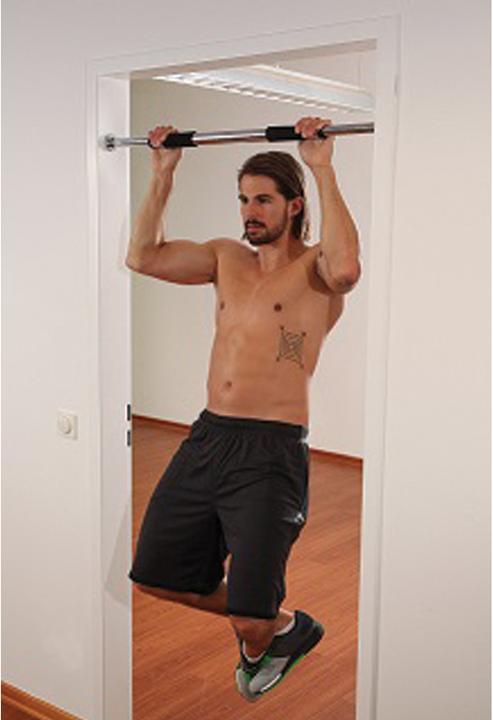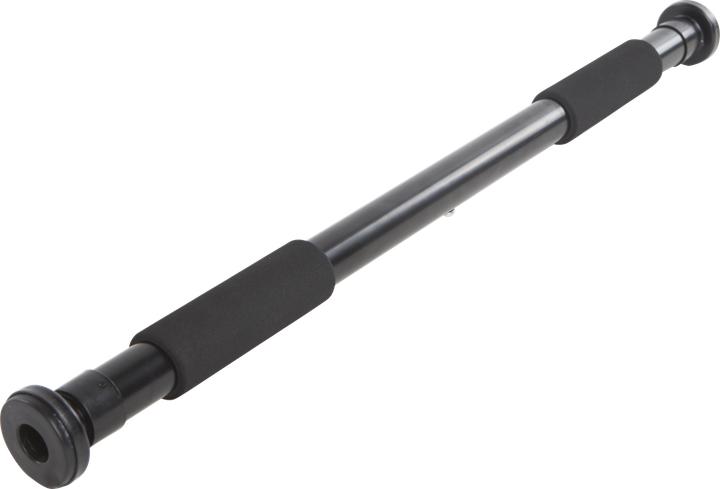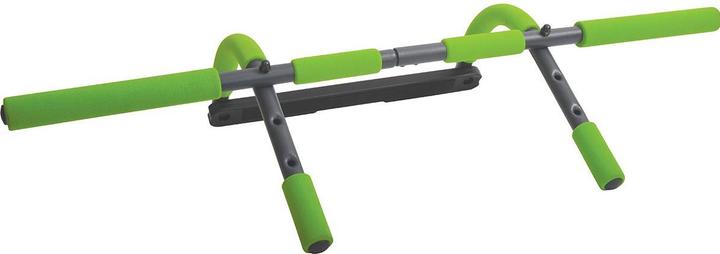

Which pull-up bar should I choose?
If, like me, you like doing pull-ups at home, you'll know that you can't just install any bar anywhere. During my last two moves, I was never able to take the pull-up bar I had from one flat to another. And putting them up was always a challenge. So for me, moving house always means changing systems. In this article, I present the different systems and tell you where to use which bar.
Roughly speaking, there are three categories of pull-up bars for the home. Those with a fixed mounting, those that hold by pressure/hanging and those that are integrated into a weight station. All have their advantages, but also their disadvantages. I'll tell you a bit more below.
Fixed installation
For a fixed installation, the pull-up bar is screwed to the wall or ceiling. The downside: you can only use the pull-up bar where it is mounted. If, for example, you want to train in another room because you have guests, that's not possible. Added to this is the fact that the pull-up bar cannot be mounted on just any wall. For example, it shouldn't be fixed to a brick wall, as the whole thing can quickly come off, even if you use chemical dowels. As a general rule, nothing weighing more than 30 kg should be hung on a brick wall. Ceilings are more suitable for installation, as they are generally made of concrete. If you live in a rented flat, it's best to ask the landlord's permission before drilling into the ceiling. You could otherwise risk piercing the underfloor heating system of the upstairs neighbours.
Drive options
If you decide to mount the pull-up bar permanently on the wall, you should, wherever possible, do so above a door frame. This gives you plenty of legroom. The distance to the wall is certainly sufficient for most pull-up bars, but you are limited in the exercises.
For example, do you want to do front raises? Then you're going to need more room for your legs and upper body. There are pull-up bars made for this that are a little further away from the wall. If your ceiling is very high, you may even have enough room to do muscle-ups (but this probably won't be possible in most flats/houses). If you're mounting the bar to the ceiling, you'll need to place it some distance from the wall so as not to limit the number of exercises that can be done. However, you should really give muscle-ups a miss with this type of bar.
If the model consists of just one bar, you can do pull-ups and chin-ups by holding the bar with your hands more or less apart. But you then don't have the option of doing neutral grip pull-ups. This type of grip should not be overlooked for a balanced workout. From a certain distance between the hands, it is preferable for the bar to be curved, so that the wrists remain straight.
Ceiling and wall mounting

Benefits:
- Suitable for ceiling and wall mounting
- Versatile drive options when mounted on the ceiling or above the door frame
- Safe, because it's screwed
- With a width of 120 cm, many options for a wider or narrower grip for pull-ups and chin-ups
Disadvantages:
- Fixed mounting
- No ability to train with a neutral grip
- Can only be fixed to concrete walls and ceilings
Wall mounting
Advantages:
- Very many grip options (incl. neutral grip)
- Very low and therefore versatile drive options even when not mounted above the door frame
- Safe, because it's screwed
Disadvantages:
- Fixed mounting
- Can only be fixed to concrete walls and ceilings
- Takes up a lot of space
Tightening and hanging
The advantage of door bars is that they are unobtrusive and can be removed quickly. The disadvantage: they can damage the door frame and the risk of injury is relatively high if the bar has not been secured properly. It all depends on the door frame. On some, the bar simply cannot be fixed securely. Clip-on door bars are already a little safer if at least one centimetre of the door frame (preferably double that) is visible. If the door frame is completely integrated into the wall, there's no point trying to fix the bar.
Drive options
With clamp-on models, you have to forgo training with a neutral grip. But you can do all sorts of other exercises (if you dare). Front and back lifts are just as doable as muscle-ups (if you set the bar lower and start with L-sit pull-ups). However, the width of the bar limits your grip. With hanging models, you can have wider handles than with clamping models and neutral grip options are also available.
Close
Advantages:
- Quick assembly and disassembly
- Various grip widths possible
- Numerous drive options
Disadvantages:
- High risk of accidents
- No possibility of training with a neutral grip
- Can damage door frame
Hanging
Advantages:
- Quick assembly and disassembly
- Many grip widths possible (incl. neutral grip), but not continuous
- Numerous drive options
- Safer solution than clamping bar in door frame
Disadvantages:
- Predefined grips
- Not as secure as fixed-mount bars
- Can damage door frame
Weight stations (without weights)
Weight stations don't need to be fixed - so there's no drilling involved and you don't risk damaging the door frame - but they do take up a lot of space. They're best suited to people who reserve an entire room for their training. The advantage is that you can also use them for dips and other exercises. Surprisingly, none of the stations offer the option of using neutral holds. What's more, there isn't enough room to do front and back lifts.
Advantages:
- Numerous input options
- Ability to do dips
- Safe
- No wall or door frame is affected
Disadvantages:
- Takes up a lot of space
- No neutral plug option
- Limited training possibilities for front and back lifts
Which one to choose
You're spoilt for choice. Personally, I prefer fixed-mount models. In the flat I'm renting, I'll have to patch the holes when I leave, but that's always better than damaging the door frame. And unfortunately I don't have room for a weight station. I'm sure you'll find the right pull-up bar for you from the list above.
From big data to big brother, Cyborgs to Sci-Fi. All aspects of technology and society fascinate me.
From the latest iPhone to the return of 80s fashion. The editorial team will help you make sense of it all.
Show all








